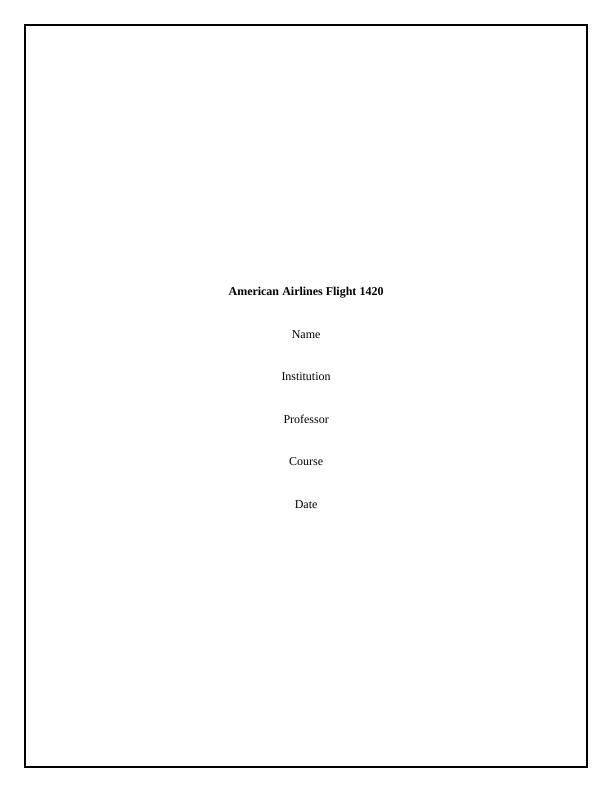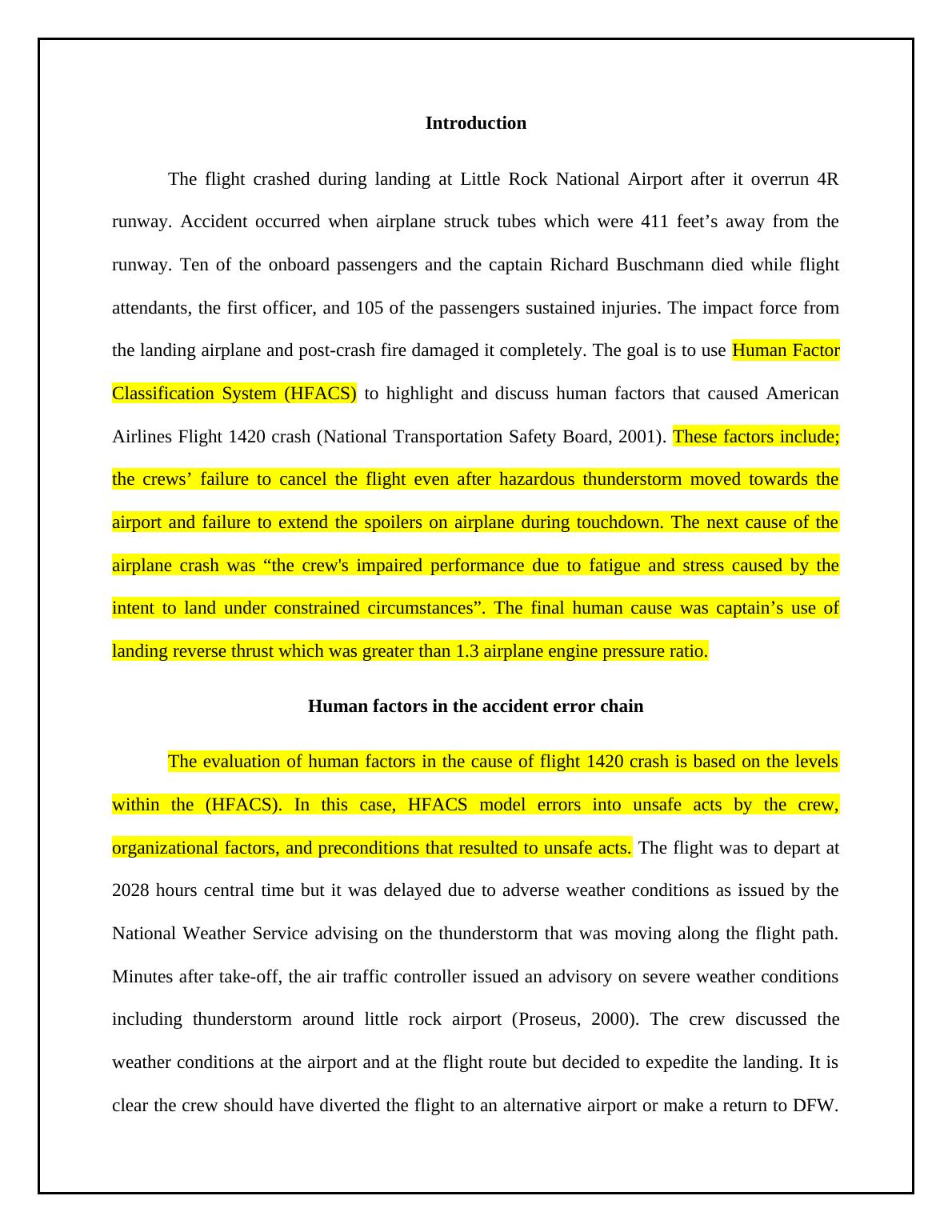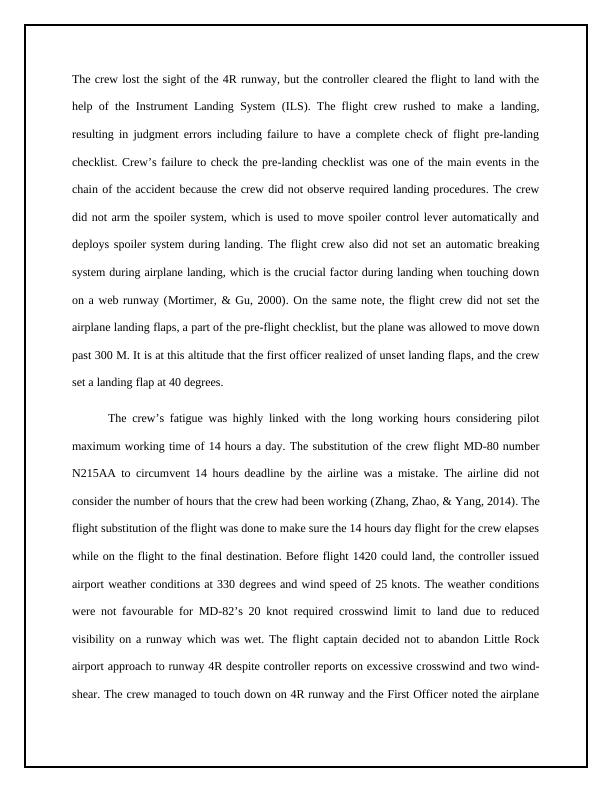American Airlines Flight l Assignment
This report explains the accident involving American Airlines flight 1420, a McDonnell Douglas MD-82, which crashed after it overran the end of runway 4R during landing at Little Rock National Airport in Little Rock, Arkansas.
6 Pages1341 Words23 Views
Added on 2022-09-23
American Airlines Flight l Assignment
This report explains the accident involving American Airlines flight 1420, a McDonnell Douglas MD-82, which crashed after it overran the end of runway 4R during landing at Little Rock National Airport in Little Rock, Arkansas.
Added on 2022-09-23
ShareRelated Documents
End of preview
Want to access all the pages? Upload your documents or become a member.
Alaska Airlines Flight 261: Accident Analysis and Recommendations
|16
|1112
|82
Air Carriers | Document
|4
|380
|46
Concorde Crash: Mechanical and Personnel Errors
|6
|706
|40
Managing Change in Air Asia Crash
|13
|3429
|384
Safety Health and Environmental Engineering
|10
|4219
|9



